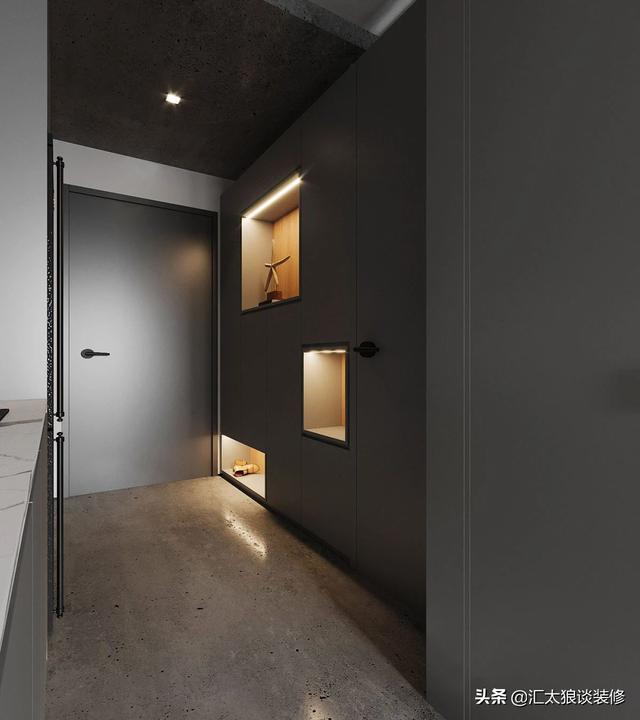密码学系列 - 对称加密
本文讨论的对称加密算法主要包括 DES、3DES、AES
DES明文:64 bit 密文:64 bit 密钥:56/64 bit(每 7 位插入一个校验位的时候为 64 bit) 其设计思想充分体现了香农提出的混淆和扩散原则

文章插图
DES 使用的是 Feistel 结构来加密的,一共需要 16 轮,加密过程如下:
- 将明文进行初始置换(通过置换表)
- 将置换后的数据分为左右 L1 R1 各 32 bit
- 将 48 bit 的子密钥与 R1 作为轮函数F的输入
- 将 L1 与轮函数的输出异或运算,得到 L1密文
- 将 L1 密文与 R1 交换位置,分别作为下一轮的 R2,L2
- 将 2-5 再重复 15 次
- 将 L17 R17 交换位置,并拼接为 64bit 数据
- 将 64bit 数据进行逆初始置换,得到最终密文
- 子密钥在每一轮中都是不一样的
- 每一轮之间会将左侧和右侧对调(右侧没有加密)
- 解密的过程就是将输出用相同的子密钥再走一遍,如果加密的子密钥顺序是key1 key2 key3,则解密的子密钥为key3 key2 key1
- 轮函数可以设计为不可逆函数如hash,对解密没有影响

文章插图
golang 代码实战:
func TestDesEncrypt(t *testing.T) { key:=[]byte{0x01,0x01,0x01,0x01,0x01,0x01,0x01,0x01} cipherBlock,err:=des.NewCipher(key) if err!=nil{t.Error(err) } src:=[]byte{0x01,0x02,0x03,0x04,0x05,0x06,0x07,0x08} encrptDst :=make([]byte,len(src)) cipherBlock.Encrypt(encrptDst,src) t.Log(encrptDst) plainDst:=make([]byte,len(encrptDst)) cipherBlock.Decrypt(plainDst, encrptDst) t.Log(plainDst)}//out: [206 173 55 61 184 14 171 248]//out: [1 2 3 4 5 6 7 8]三重DES明文:64 bit 密文:64 bit 密钥:56/64 * 3 bit(加入校验位的时候为64 bit)为了增加 DES 的强度,明文经过 3 次 DES 处理后变成最后的密文,因此密钥长度为 56/64 * 3 bit 。3 次 DES 处理并不是简单的 3 次加密的过程,而是加密、解密、加密,解密的过程相应的就是解密、解密、解密 。这样设计是因为在 3 个密钥相同时,可以兼容 DES 算法

文章插图
golang 代码实战:
func TestTripleDesEncrypt(t *testing.T) { key:=[]byte{0x01,0x01,0x01,0x01,0x01,0x01,0x01,0x01,0x01,0x01,0x01,0x01,0x01,0x01, 0x01,0x01,0x01,0x01,0x01,0x01,0x01,0x01,0x01,0x01} cipherBlock,err:=des.NewTripleDESCipher(key) if err!=nil{t.Error(err) } src:=[]byte{0x01,0x02,0x03,0x04,0x05,0x06,0x07,0x08} encrptDst :=make([]byte,len(src)) cipherBlock.Encrypt(encrptDst,src) t.Log(encrptDst) plainDst:=make([]byte,len(encrptDst)) cipherBlock.Decrypt(plainDst, encrptDst) t.Log(plainDst)}//此处3个密钥相同,兼容DES//out: [206 173 55 61 184 14 171 248]//out: [1 2 3 4 5 6 7 8]AES明文:128 bit 密文:128 bit 密钥:128/192/256 bit (分别需要10/12/14轮)AES 标准最后评选出的算法是 Rijindale 算法,该算法支持密钥 128/192/256 bit ,分别需要 10/12/14 轮,本文讨论的是 128 bit密钥 。它的加密过程并没有使用 DES 的 feistel 结构,而是使用了一种新的 SPN 结构,需要 10-14 轮计算,如下图:

文章插图
其中每一轮计算过程如下:
- SubBytes(字节替换):以字节大小为索引,与s_box表中字节映射
- ShiftRows(行移位-扩散):从上到下从左到右的顺序组成 4 * 4 数组,从 0 行开始,第 n 行向左平移 n 个字节
- MixColums(列混肴-扩散):对每一列进行矩阵运算,共四列
- AddRoundKey(轮密钥加):与轮密钥即子密钥异或运算
- 最后一轮没有列混淆
- 加密时:SubBytes -> ShiftRows -> MixColums -> AddRoundKey 解密时:AddRoundkey -> InvMixColums -> InvShiftRows -> InvSubBytes (Inv代表逆运算)
func TestAesEncrypt(t *testing.T){ key:=[]byte{0x01,0x01,0x01,0x01,0x01,0x01,0x01,0x01,0x01,0x01,0x01,0x01,0x01,0x01,0x01,0x01} cipherBlock,err:=aes.NewCipher(key) if err!=nil{t.Error(err) } src:=[]byte{0x01,0x02,0x03,0x04,0x05,0x06,0x07,0x08,0x01,0x02,0x03,0x04,0x05,0x06,0x07,0x08} encrptDst :=make([]byte,len(src)) cipherBlock.Encrypt(encrptDst,src) t.Log(encrptDst) plainDst:=make([]byte,len(encrptDst)) cipherBlock.Decrypt(plainDst, encrptDst) t.Log(plainDst)}//out [19 7 34 196 163 153 225 186 223 245 40 131 80 80 70 203]//out [1 2 3 4 5 6 7 8 1 2 3 4 5 6 7 8]迭代模式以上讨论的三种加密算法都是分组密码,每次只能处理特定长度的一块数据,例如 DES 和 3DES 能处理的这块数据长度为 8 bytes,AES 的为 16 bytes 。而我们的日常需要加密的明文基本上都是大于这个长度,这就需要我们将明文的内容进行分组并迭代加密,这个迭代加密的方式就是模式 。
推荐阅读
- 什么香水好闻又持久?这5款才最受女生喜爱的系列,你集齐了吗?
- 美甲|夏日心动美甲系列?,花朵手绘清新百搭,氛围感十足!
- 真我|狂销200万台!千元神机realme Q3系列好评率达97%
- 华日家具系列 华日家具实木家具怎么样
- 真我|新一代千元机皇!realme Q5系列上架:高通骁龙870加持
- 发布|新一代千元机皇!realme Q5系列4月20日发布:唯一骁龙870+80W闪充
- 企业网站维护教程:解决Nginx的80端口占用导致的一系列问题
- 黄茶属于红茶系列吗,安徽的霍山黄芽属于绿茶吗
- 匡威鞋头不对称是正品吗 匡威鞋头一大一小正常吗
- window提权系列之本地溢出exploit,让你的电脑成为肉鸡















